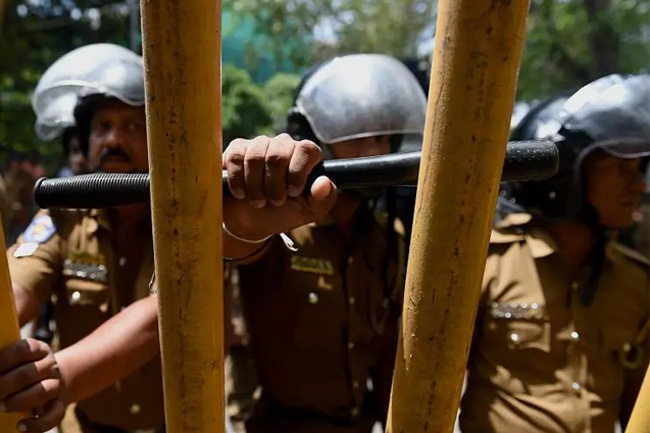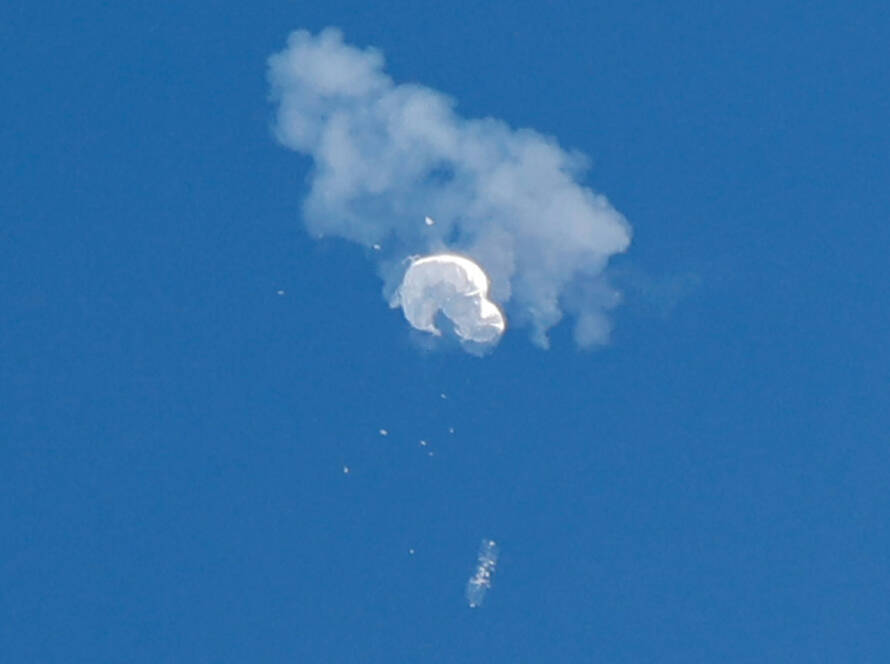By Vinod Moonesinghe
Russia launched its “Special Military Operation” (Spetsialnaya Voennaya Operatsiya – SVO), aimed at “demilitarizing” Ukraine on February 24, 2022. The Russian forces launched their campaign in much the same way as they did in the Crimea in 2014, when the Ukrainian forces did not resist. There is evidence to suggest that the Russians did not expect the level of resistance that they did encounter.
In the north the Russians met good progress until they reached the vicinity of the Ukrainian capital, Kyiv, where Heliborne troops attempted to seize the Antonov Airport. Here, strong Ukrainian opposition stopped them in their tracks and eventually pushed them back.
In the south, amphibious forces assaulted the port of Mariupol as the Russians penetrated deep, crossing the Dnieper River and capturing Kherson before being stopped by superior forces outside Mikolaiv.
The following two years have seen bitter fighting, which have proved the most disruptive of the conventional wisdom regarding warfare since the Second World War. Three factors have emerged of great significance: the effectiveness of unmanned aerial vehicles (UAVs) or “drones”, the increased potency of defensive measures against armoured vehicles, and the increased effectiveness of anti-aircraft defences. These have impacted the development of military doctrine, and the use of existing military assets.
Deep operations
In 1940-42, the German war machine cut through its opponents like a knife through butter. The Nazis employed large tank formations, in combination with other arms, to punch holes in the enemy lines and drive deep into the rear, attacking logistics and morale. Attack aircraft acted as long-range artillery, providing support to the advancing armoured spearheads.
The Soviet Union responded with similar “deep operations”, originally developed by Marshal Tukhachevsky in the 1920s and 1930s. The tank became the queen of the battlefield, and all armies attempted to emulate the Soviet T-34 medium tank, which optimised the balance between mobility, protection and firepower.
This type of rapid, combined-operations warfare continued until the 1973 Arab-Israeli War. The Israelis found their tank attacks rebuffed with anti-tank guided weapons, their air attacks limited by rapid-fire anti-aircraft artillery and by surface to air missiles.
In response to this, the US military developed the “Air-Land Battle” concept, using direct confrontation, firepower and material superiority to overcome the enemy, combined with the use of speed, subtlety, and flexibility to disrupt the adversary’s capacity to fight.
The US did not get much opportunity to test this concept. All its wars were against technologically and materially inferior enemies: tiny Grenada, Panama, Iraq, and Afghanistan.
For example, the Iraqis, due to sanctions, lacked training and had no anti-tank missiles, mines or effective anti-aircraft defence systems. Hence, when US tank units launched “thunder runs” (raids using armoured and mechanised forces) through Baghdad, they met little opposition.
New technologies
However, the writing had been on the wall since 1973. A 1995 Russian “thunder run” in Grozny, in Chechnya (against an enemy who did possess anti-tank missiles), led to a loss of 80 percent of its armour. The Hezbollah militia repulsed an Israeli invasion of Lebanon in 2006, making good use of anti-tank weaponry, particularly of anti-tank missiles.
The US had been using remotely operated drones with considerable effectiveness, in the course of its “War on Terror.” In over 14,000 attacks, these inflicted up to 21,000 casualties, about a fifth of which were civilians.
Significantly, in the 2010s, Daesh, better known as the Islamic State (ISIS) began to use cheap off-the shelf quadcopter drones with devastating effect against Syrian and Iraqi targets. Other Syrian groups launched swarms of drones against Russian bases in 2018. The Ansarallah forces in Yemen also began to use them in their struggle against the US-backed coalition.
In 2020, Turkey used swarms of drones to attack the Syrian Army. Turkey had earlier relied on expensive Israeli and US drones, but sanctions had forced it to develop its own, far cheaper versions. Azerbaijan used drones successfully against Armenia, later in 2020, carrying out reconnaissance, observing for ground artillery, firing on enemy positions, and providing cover to ground forces. Armenian air defences, designed for countering aircraft, proved ineffective against drones.
Tactical changes
The Russians still adhered to the Soviet deep-penetration doctrine when they started invading Ukraine. Combined armored and infantry columns spearheaded the ground invasion. The Armed Forces of Ukraine (AFU), while weaker in tanks, artillery, aircraft and ships, outnumbered the invasion ground force by about three to one.
They also possessed Javelin “top attack” anti-tank missiles, the deadly new Bayraktar TB-2 drones and a “secret weapon”: masses of first-person view (FPV) quadcopter drones. These weapons brought the Russian ground attack to a standstill, while strong air defences neutralised Russian aircraft. Meanwhile, Ukrainian marine drones offset the Russian naval preponderance.
The ubiquity of drones, as well as satellite surveillance, has meant that large concentrations of troops or armour become immediate targets. In both attack and defence, the brunt of the fighting has been borne by squad- or platoon-sized units.
Armoured attacks in numbers larger than five or six armoured vehicles have taken heavy casualties. In this situation, small squads of highly trained units have been most effective. Armoured infantry fighting vehicles have become expendable troop transports – glorified lorries – while tanks serve as mobile artillery for infantry support.
The war devolved into a series of bitterly contested offensives by small units on either side, for limited objectives. While the AFU managed to push the numerically inferior Russian forces back from Kyiv, Kharkhiv, and Kherson, the Russians made some gains in the Donbass, notably capturing Severodonetsk, Lysychansk, and Bakhmut.
In mid-2023, heavily reinforced with NATO weapons, with military units trained or retrained by NATO instructors, the AFU launched its summer counteroffensive. This operation, intended to reach Sea of Azov, became a slow, bloody grind for each metre of territory, before coming to a complete stop. Expensive, much-vaunted Western weapons systems proved as vulnerable as their far-cheaper Russian counterparts.
The Russians resumed their offensives, taking bigger and bigger bites out of the Ukrainian-held territory. However, the rapid, deep-penetration manoeuvre operations envisaged pre-war, in both Russian and Western doctrines, have proved impossible. Battles have been for villages and urban districts, forests, and tree lines. The Soviet practice of grouping strongly constructed high-rise buildings to create makeshift citadels has aided this process.
Drones, turtles, mines, and bombs
Ukrainian drones, with spectacular on-board videos, made the most media splash. However, the Russians retaliated with Iranian-designed “kamikaze” drones and FPV drones as well as larger conventional drones, although their stunning video recordings received less media attention.
Nevertheless, while drone strikes proved remarkably effective, broadcast footage of successful attacks exaggerated their impact. On average, up to ten FPV drone attacks might be needed to disable or destroy an armoured vehicle. Drones have proved most successful against infantry in the open.
Armored vehicles began equipping themselves with countermeasures, such as “cope cages”, improvised metal cage-like structures mounted on top for protection against top-attack missiles and drones.
The Russians took this a step further by modifying tanks with metal coverings, their testudine appearance earning for them the nickname “turtle tanks”. Electronic countermeasures against drones have had varying success, as electronic warfare has reached a high level of intensity at a tactical level.
Mines proved to be a major battle-winning weapon, especially against armored vehicles. New and rapid methods of deploying mines meant that cleared paths through minefields did not stay cleared for long. Meanwhile, mine-clearing equipment, being at a premium, became prime targets for attack by drones, anti-tank missiles and aircraft.
The strength of air defences forced attack aircraft and helicopters to remain remote from the battlefield, increasing the importance of fire-and-forget missiles and smart bombs. Having established air superiority along the frontline, the Russians depended more and more on the FAB 500, 1500, and 3000 smart bombs, capable of gliding to their targets from far behind the frontline and wreaking devastation on impact.
Industrial strength
However, the course of the war has been decided most by artillery. Both guns and multi-barrel rocket launcher (MBRL) systems have grown in sophistication, with increased accuracy and range.
The almost static, siege-like battles, consequent on the ascendancy of the defensive, have meant that tonnages of shells have mattered more than numbers of soldiers or tanks. For example, a vastly outnumbered Russian force has held off bitter AFU attacks in northern Kharkhiv oblast, using primarily artillery. The AFU fires about 2,000 shells daily, compared to the Russian forces’ approximately 10,000 shells. These numbers are far more than most countries plan on and so have depleted stocks considerably.
NATO aims to produce 1.2 million shells this year, having already acquired 300,000 from South Korea. The EU plans to purchase 800,000 shells. Meanwhile, Pakistan is manufacturing an unspecified amount of Soviet-style ammunition for Ukraine.
On the other hand, Russia produced three million shells last year, and plans to increase production this year, although the target is unknown. Additionally, Russia has secured an undisclosed seven-digit number of shells from Iran and North Korea and may potentially buy more from India, Belarus, and China.
In the final analysis, this war depends upon industrial strength. The Russian (mainly state-owned) military-industrial complex has been able to outproduce the entire West in key areas, including shells, bombs missiles, and drones. It has had the advantages of standardisation, central direction and production according to necessity.
Conversely, the Western military-industrial complex, being profit-driven, refused to invest in the extra production facilities required. This is possibly the biggest strategic lesson to emerge from the war.
Whatever it ultimate outcome, this conflict has had an enormous effect on the way wars will be fought in future. Its use of drones has equalised asymmetry, while its use of artillery has widened the disparity. However, perhaps the most hopeful take-away from this bloody clash is that wars are now too costly in terms of human lives and economic impact to be considered as an acceptable means of settling differences.
Vinod Moonesinghe read mechanical engineering at the University of Westminster, and worked in Sri Lanka in the tea machinery and motor spares industries, as well as the railways. He later turned to journalism and writing history. He served as chair of the Board of Governors of the Ceylon German Technical Training Institute.
Factum is an Asia-Pacific focused think tank on International Relations, Tech Cooperation, Strategic Communications, and Climate Outreach accessible via www.factum.lk.
The views expressed here are the author’s own and do not necessarily reflect the organization’s.


